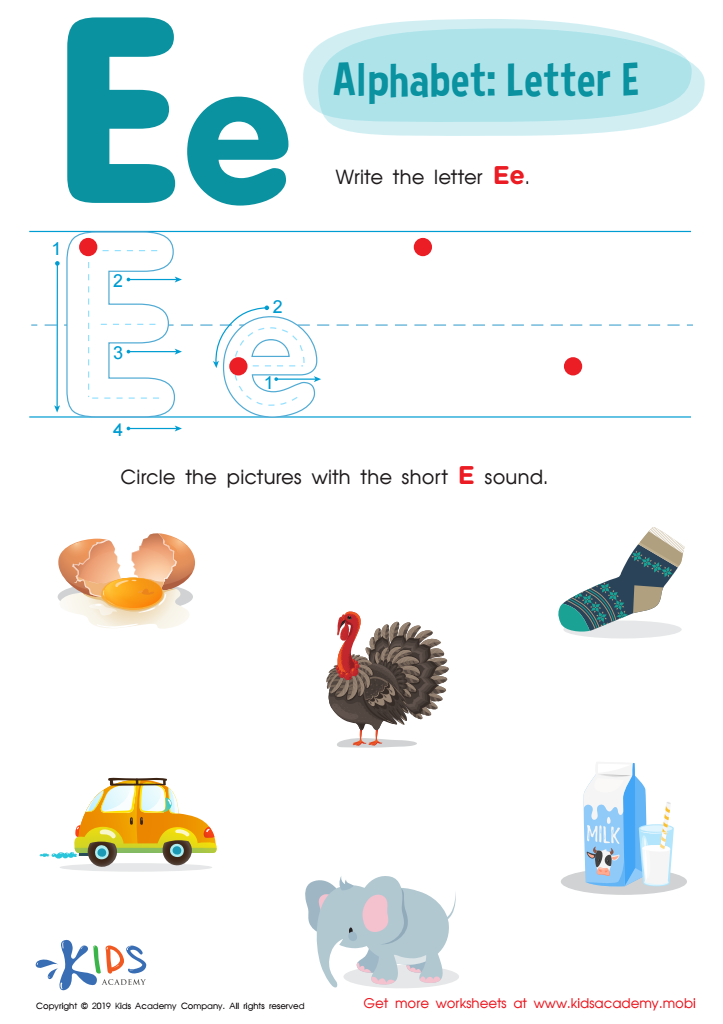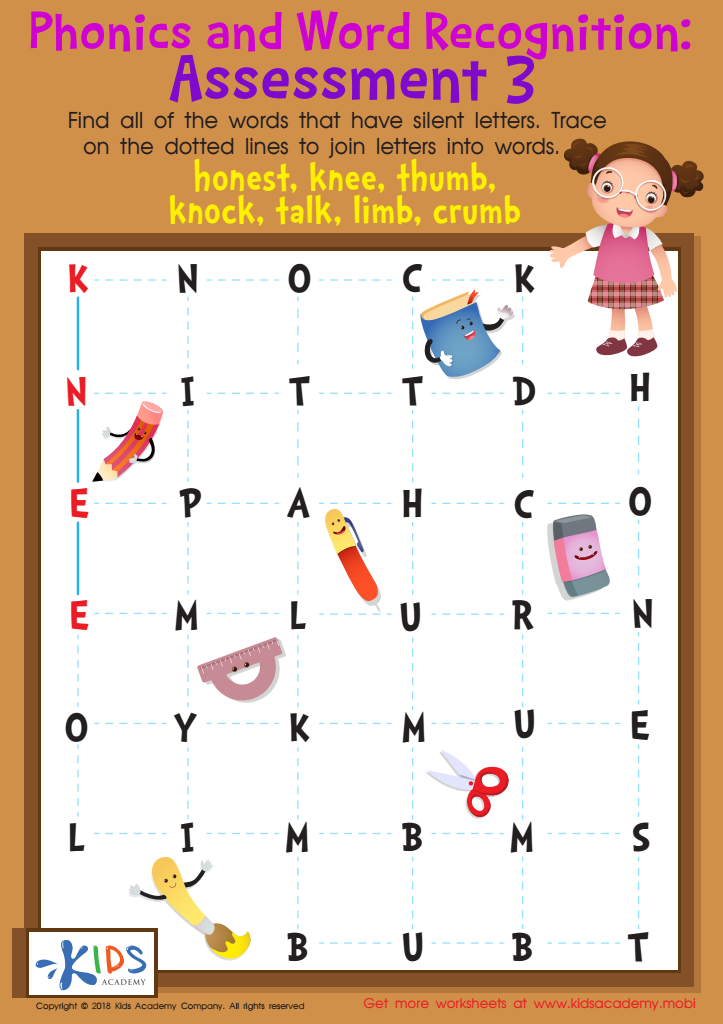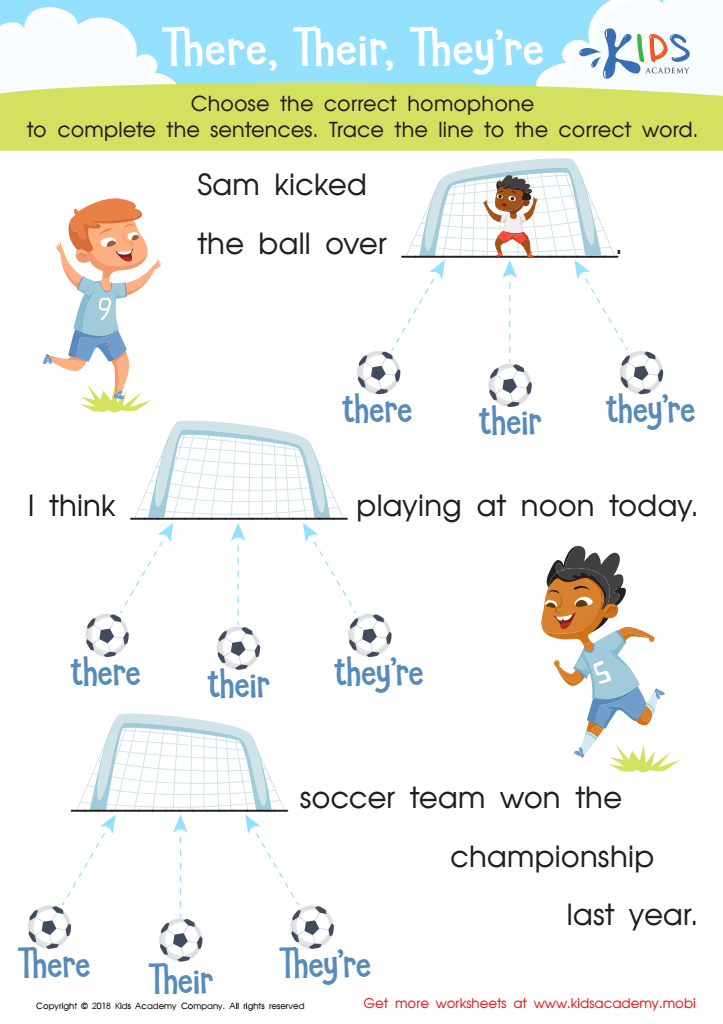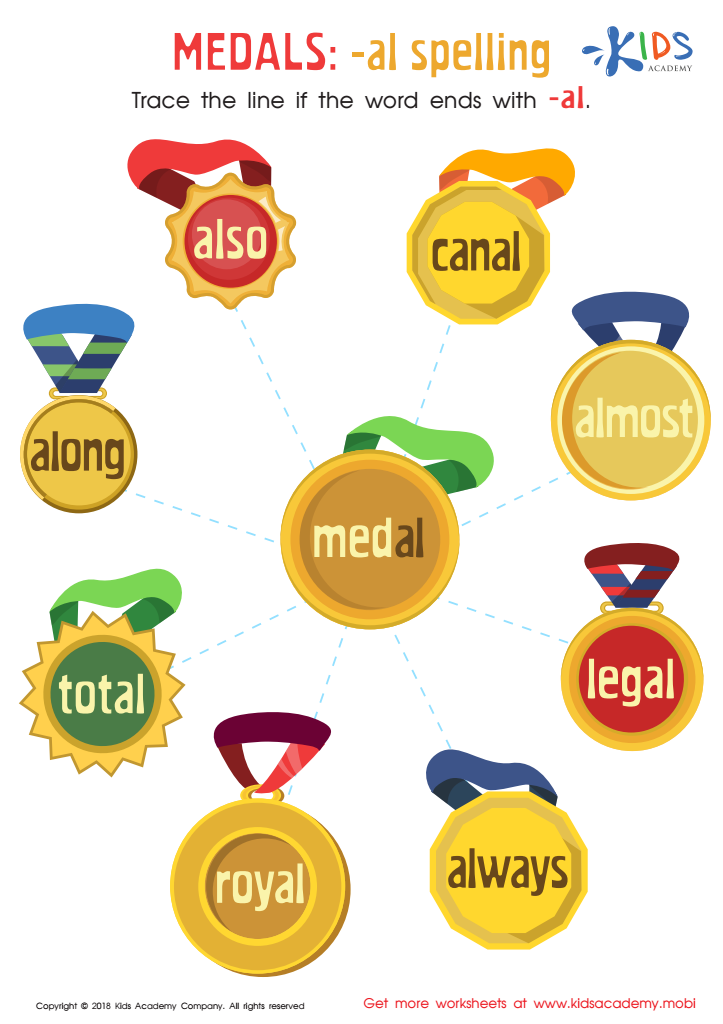Normal Alphabet Worksheets for Ages 3-8
252 filtered results
-
From - To
Discover our engaging Normal Alphabet Worksheets designed for children ages 3 to 8! These printable resources help young learners explore letter recognition, phonics, and writing skills using colorful, interactive activities. With various worksheets that include tracing letters, matching exercises, and fun games, children can develop their understanding of the alphabet in an enjoyable way. Perfect for home or classroom use, our worksheets cater to different learning styles and provide essential practice for early literacy. Encourage your child’s love for learning with our thoughtfully designed alphabet worksheets that make mastering the ABCs a fun and rewarding experience!


Tricky Words Worksheet


I Stands High Worksheet


Letter E Tracing Worksheet


Long Vowel Review Worksheet


Neighborhood Words Worksheet


Name Those Clothes Worksheet


Opposite Day Worksheet


Letter A Tracing Worksheet


Phonics and Word Recognition: Assessment 1 ELA Worksheet


Phonological Awareness: Assessment 1 Worksheet


Phonics and Word Recognition: Assessment 3 Worksheet


Phonics and Word Recognition: Assessment 2 Worksheet


Phonics and Word Recognition: Assessment 1 Worksheet


There, Their, They're Worksheet


Find The Missing Word Worksheet


Silent Letter Maze Worksheet


Sight Word Archery Worksheet


Homophones: Crayons Worksheet


Poem: What Is Pink? Worksheet


Medals: Al Spelling Worksheet


Hotel Mix-up Worksheet


Rhyming Words Worksheet


Poem: Cats and Dogs Worksheet


Open Syllables Worksheet
Parents and teachers should care about the Normal Alphabet for Ages 3-8 because it serves as the foundation for literacy development, which is crucial in early childhood education. During these critical years, children are rapidly developing cognitive and language skills, and exposure to a solid understanding of the alphabet paves the way for reading and writing fluency.
Teaching the Normal Alphabet enhances children’s phonemic awareness, the ability to recognize and manipulate sounds, which plays a significant role in early reading success. It makes learning fun through engaging activities that encourage exploration and creativity, making the alphabet more relatable and easier to grasp.
Additionally, children who are familiar with the Normal Alphabet often exhibit better language skills and self-expression, vital for effective communication. This familiarity not only boosts their confidence but also encourages a love for learning, facilitating a positive attitude towards education.
By investing time and resources into teaching the Normal Alphabet, adults can help children build essential skills that will benefit them academically and socially as they progress through school and beyond. Ultimately, nurturing a strong alphabet foundation sets the stage for lifelong learning and success.
 Assign to My Students
Assign to My Students



















